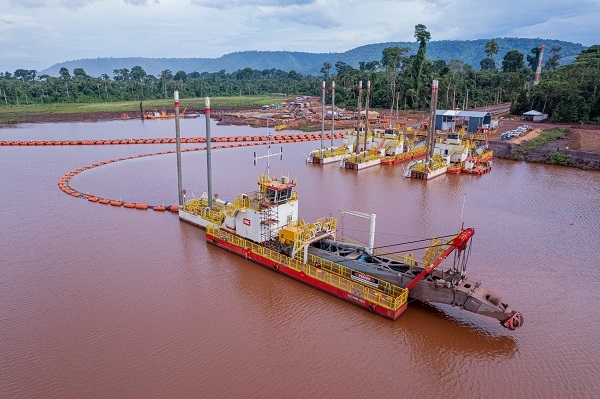Vale has started the commissioning of the Gelado iron ore project in Carajás, Pará state, Brazil, reusing the tailings that have been deposited at its dam since Vale’s start of work in the region in 1985.
The project is using 100% electric dredges for extraction, which will negate CO2 emissions as it produces pellet feed sustainably.
The initial production capacity will be 5 million tons per year; Vale’s investment in the project is US$485 million.
The miner said its commissioning phase, during which it will conduct performance and capacity tests with loading, will continue through the first half of the year until it can commence operations on a continuous basis.
“After the conversion of Carajás Plant 1 to natural humidity processing, planned for the next few years, the Gelado project will reach its capacity of 10 million tons per year,” the company said.
Vale has been producing iron ore at Carajás for more than 37 years, depositing the tailings in the Gelado dam. However, the iron ore particles within the material could not be used in the original beneficiation process due to impurities such as silica and alumina.
Using dredges, the tailings will be removed from the dam and sent back for processing at the plant.
“The ore grade of the material extracted from the dam is already 63%, considered high. At the plant, the ore will undergo a magnetic concentration process, in which a powerful magnet separates the ferrous particles from the silica and alumina, further increasing its quality,” the miner said of the project.
“This is the first time that magnetic concentration has been used in Pará’s operations.”
The plant’s end product, a pellet feed, will go to its pelletizing plant in São Luís, Maranhão, Brazil, for steelmaking end users.
Vale has a target of reducing its scope 3 emissions by 15% by 2035.
“The sustainable character of the project is reinforced by the use of 100% electric dredges, as well as electric pumps, which use electricity from renewable sources rather than fossil fuels such as diesel,” it said.
“Thus, over 10 years, the project will stop emitting a total of 484,000 tons of CO2, equivalent to the consumption for one year of 105,000 gasoline-powered 1,000-cc cars. The dredges, of Dutch technology, are 46 meters long and weigh 364 tons.”
The facility will employ about 185.
Source: Vale

